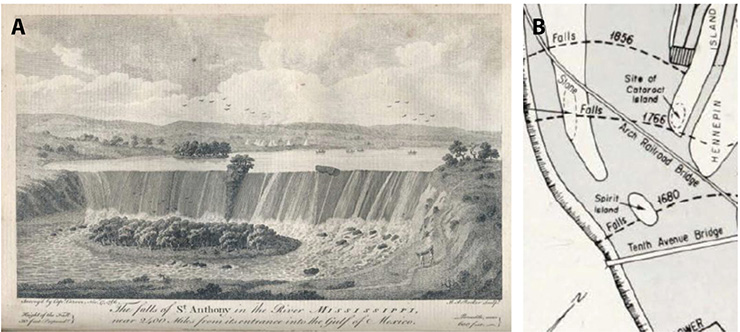- Home
- Publications
- PAGES Magazine
- Continental Archives of Past Global Changes: From Quaternary To Anthropocene
Continental archives of Past Global Changes: from Quaternary to Anthropocene
Blas Valero-Garcés, A. Myrbo, A. Noren and C. Jennings
Past Global Changes Magazine
26(2)
84
2018
Blas Valero-Garcés1, A. Myrbo2, A. Noren2 and C. Jennings2,3
Minneapolis, USA, 24 May 2018
The Department of Earth Sciences, the Continental Scientific Drilling Coordination Office (CSDCO) and LacCore, University of Minnesota (UMN), Minneapolis, USA, hosted a Symposium after the PAGES Scientific Steering Committee (SSC) meeting. As in previous years, the SSC meeting provided an opportunity for local scientists to showcase the research related to past global changes and to interact with PAGES scientists. Minnesota has a long history of paleoclimate and paleoenvironmental research and, in particular, the Limnological Research Center has been a hub for past global changes research and the origin of LacCore and CSDCO (csdco.umn.edu). Following the steps of Herb Wright and Kerry Kelts, both facilities have been instrumental for a large number of lake-core projects in the last decades. The Symposium included 14 talks addressing local to global topics, and discussed several aspects of Quaternary and Anthropocene climate changes and ecosystem responses.
 |
|
Figure 1: Left. The Falls of St. Anthony in a 1766 Sketch by Jonathon Carver. Right. The retreat of St. Anthony Falls from 1680 to 1871 after Sardeson, 1916. From Wright (1972). |
At a local scale, Amy Myrbo (UMN) showed the multiple negative consequences of sulfate pollution of freshwater shallow lakes, and how to recognize sulfate loading in the (neo)paleorecord. Randy Calcote (UMN) described several examples of how vegetation patchiness is a major control on ecosystem evolution during the Holocene and has to be considered in our future predictions. Andy Breckenridge (University of Wisconsin-Superior) illustrated how to build a 5,000-year varve chronology from glacial lakes Norwood and Agassiz. And Carrie Jennings (Freshwater Society and UMN) reviewed the Glacial Geology of the Minnesota and Mississippi Rivers (Fig. 1).
At a regional scale, Charles Umbanhowar (St. Olaf College) illustrated the differences between aquatic and terrestrial subarctic ecosystems (Manitoba, Canada) and how they tell mostly the same story at multiple sites. Kelly MacGregor (Macalester College) showed the Holocene landscape dynamics in the Paternoster lakes in Glacier National Park and the later human impacts. Kevin Theissen (St. Thomas University) presented several cases of carbonate lake sequences from Nevada and their isotopic signatures during the Holocene.
At a global scale, Larry Edwards (UMN) summarized the Chinese and Amazon cave sequences and how they pace the monsoon changes and show a clear anti-phase behavior. Larry showed us the newest U/Th and 14C speleothem chronology from several Chinese caves that will help to improve the 14C calibration curve. Emi Ito (UMN) presented the case of Pliocene lakes in Western North America and a possible new International Continental Scientific Drilling Program (ICDP) project. In terms of geobiochemical cycles, Jeff Havig (UMN) reviewed several examples of how to link geochemistry and geobiology in extreme lake and spring environments as found in Yellowstone, and Adam Heathcote (St. Croix Watershed Research Station) showed a review of global trends in carbon burial in lakes. Paul Glaser (UMN) summarized several decades of studies on peatlands and the changing relationship between sea level and peat growth depending on the tectonic settings. To end proceedings, Shane Loeffler (UMN) gave us an overview of Flyover Country®, a US National Science Foundation-funded offline mobile app for geoscience outreach and data discovery (see Myrbo et al., this issue).
Symposium participants toured the CSDCO and LacCore Facility, and Anders Noren (UMN) gave a summary of the support and infrastructure provided to the research community, and examples of recent high-profile projects. These facilities offer expertise in project development, planning, and management; rental equipment for field operations; core lab for processing, scanning, and subsampling; repository for cores, data, publications, and reference collections; support for outreach, diversity, and education activities; community software; and community coordination for long-range science planning. Each year, they provide support to an average of 1,400 scientists from 500 institutions worldwide, and the repository now includes more than 8,000 sites. With roots in the paleolimnology community, these facilities now offer services to continental drilling and coring projects with any scientific focus.
The following day, Carrie Jennings (Freshwater Society and UMN) led a field trip to show the post-glacial evolution of the Minnesota and Mississippi rivers’ valleys. The Minnesota River valley was carved by the draining of glacial Lake Agassiz and it has a wide and active floodplain with dynamic lakes, levees and channels. The Upper Mississippi was one of the first locations where geologists demonstrated the long periods needed for geological processes to operate, as in 1876, when N.H. Winchell calculated that the retreat rate for St. Anthony Falls in Minneapolis was about a meter per year.
affiliations
1Pyrenean Institute of Ecology, Spanish National Research Council, Zaragoza, Spain
2LacCore Facility and Continental Scientific Drilling Coordination Office (CSDCO), University of Minnesota, Minneapolis, USA
3Freshwater Society, St. Paul, USA
contact
Blas Valero-Garcés: blas ipe.csic.es
ipe.csic.es
reference